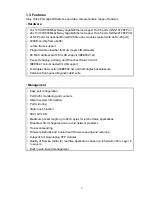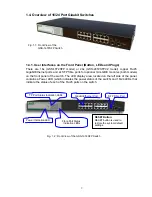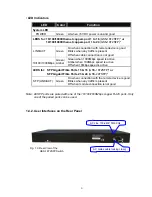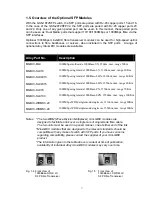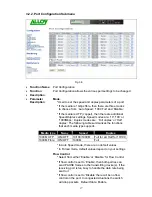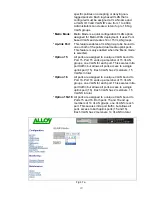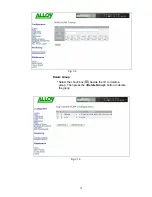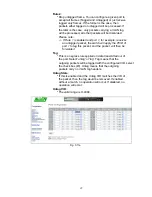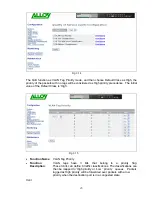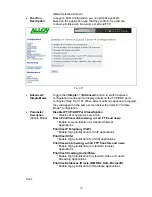
3.2.3. VLAN Mode Configuration
Fig. 3.7
The switch supports Port-based VLAN and Tag-based VLAN (802.1q)
.
16 active VLANs are
supported, with VLAN ID’s from 1-4094. VLAN configuration is used to partition your LAN
into small broadcast domains (groups). Properly configuring VLANS can improve your
network security and increase network performance by limiting broadcast propagation.
•
Function Name:
VLAN Mode Setting
•
Function
There are 4 VLAN Modes: ‘Port-based’, ‘Tag-based’, ‘Metro
Description
:
mode’ or ‘Disabled’. These are selected from the drop down
list. Selecting one will take affect immediately.
•
Parameter VLAN
Mode
:
Description
:
*
Disable
:
Disable all VLAN functions. This is the default
setting.
*
Port-based
: Port-based VLAN simply groups ports
together. Ports within the same group can talk
to each other. Ports that are not in the same
group are blocked from communicating. Any
port can be a member of more than one VLAN
to enable shared server, internet or uplink ports.
This switch can support up to a maximum of 16
port-based VLAN groups.
*
Tag-based
: Tag-based VLAN identifies its members by
a VID that is included in the headers of packets
sent and received. This is quite different from
port-based VLAN, in that tagged VLANs can exist
as groups across multiple switches in your
enterprise whereas port VLANS are local only to
the switch that they are defined on. Port ingress
(incoming) and egress (outgoing) rules allow for
filtering of packets that don’t conform to your
Cont.
18
Summary of Contents for 16-PORT GIGABIT WEB SMART SWITCH GSS-16T2SFP
Page 2: ...ii June 24th 20005...
Page 6: ......

